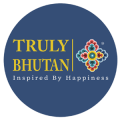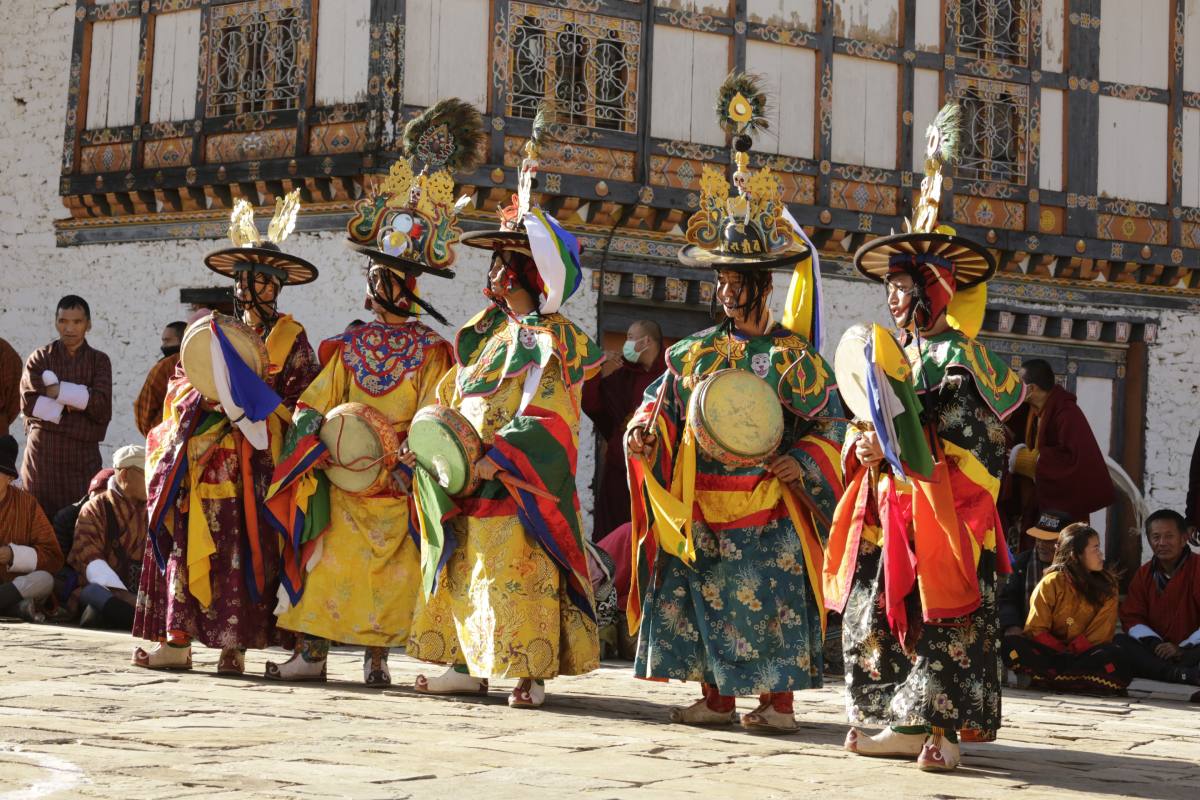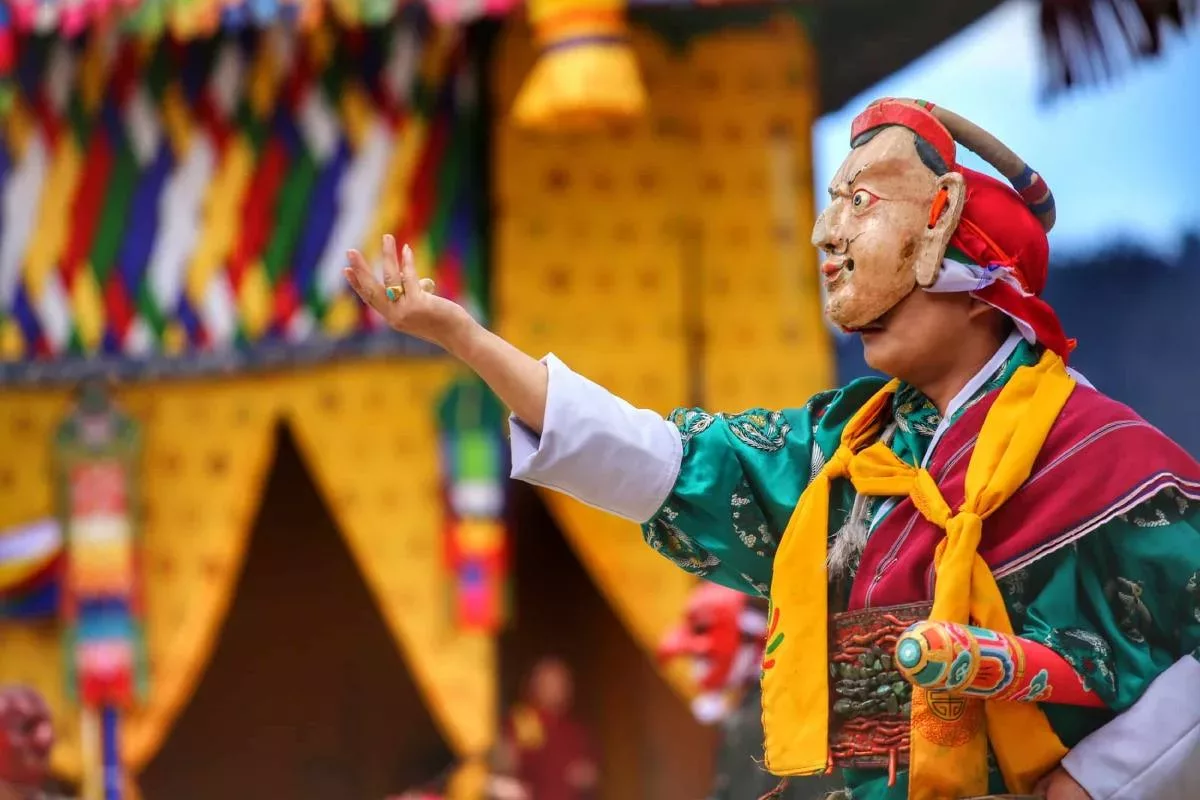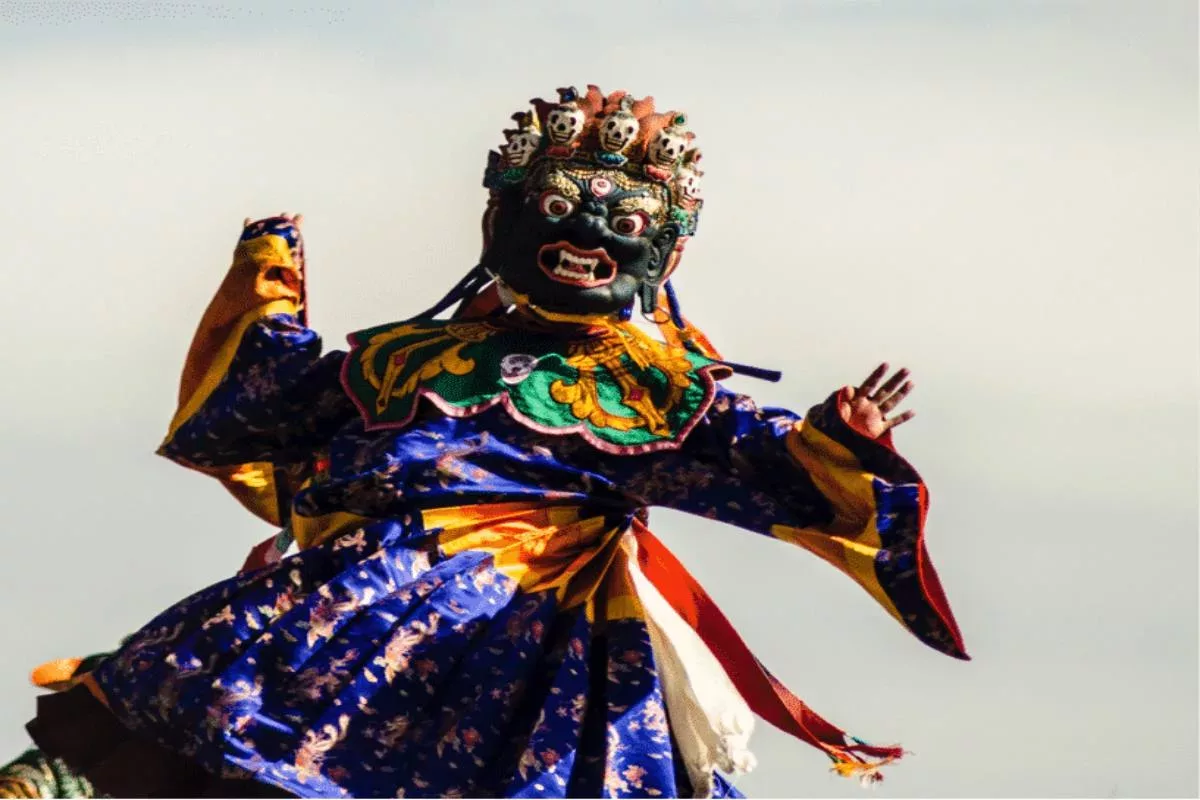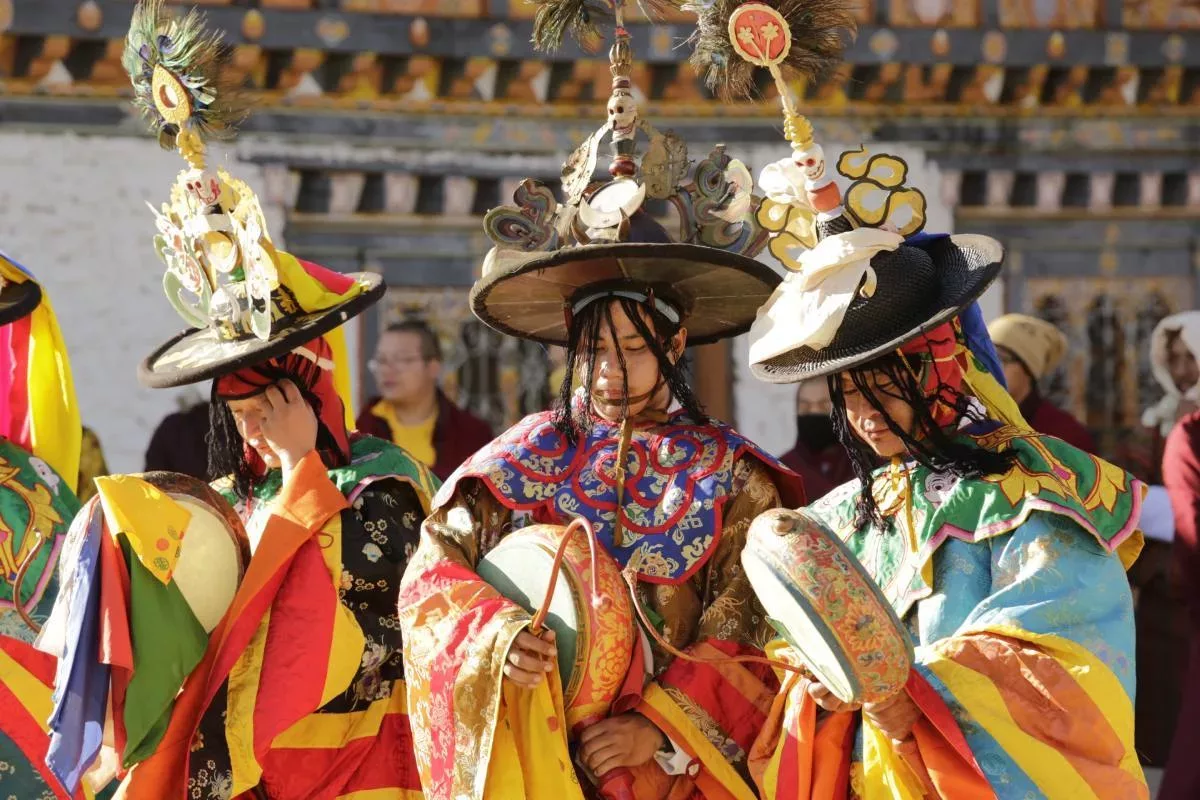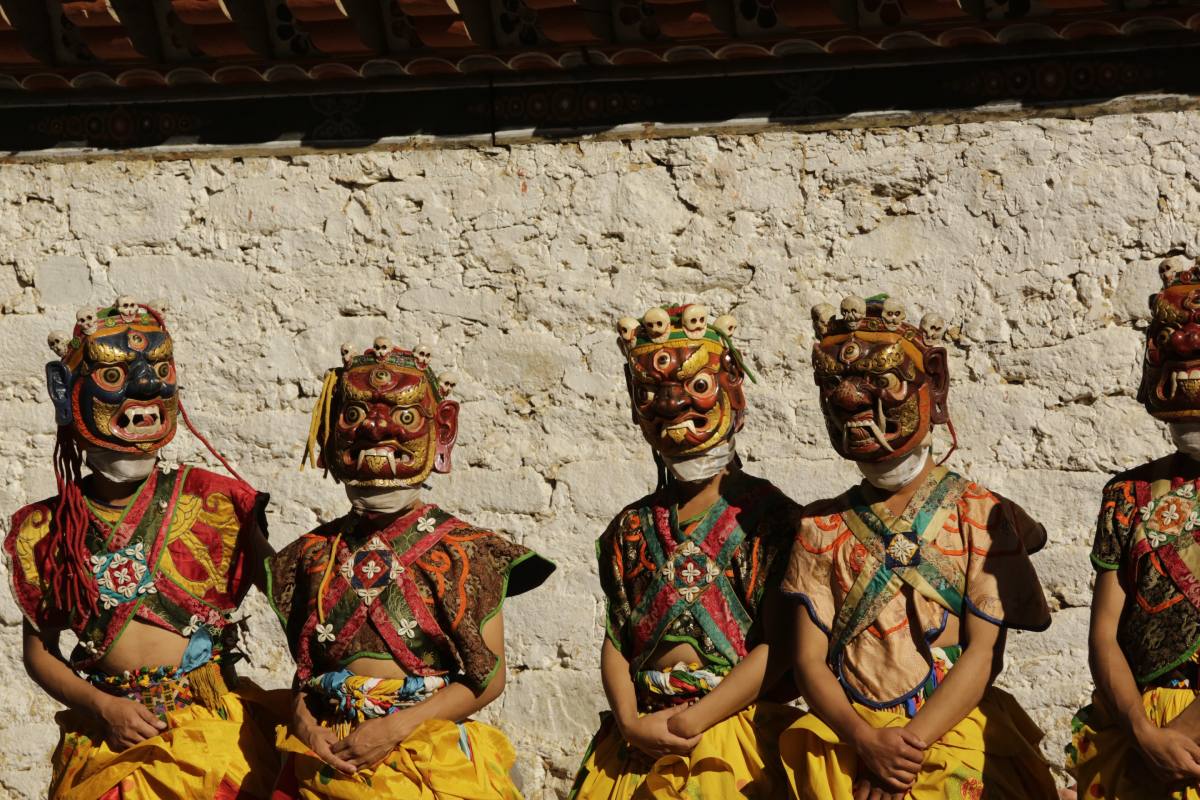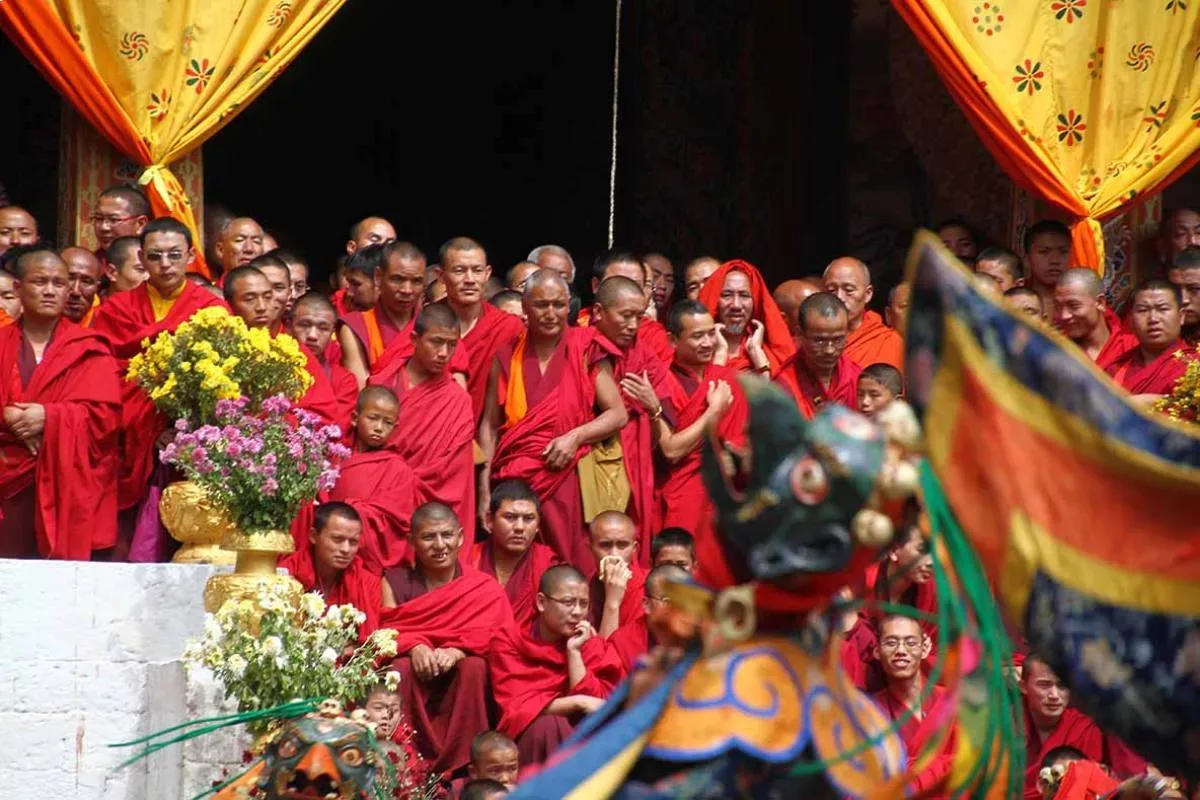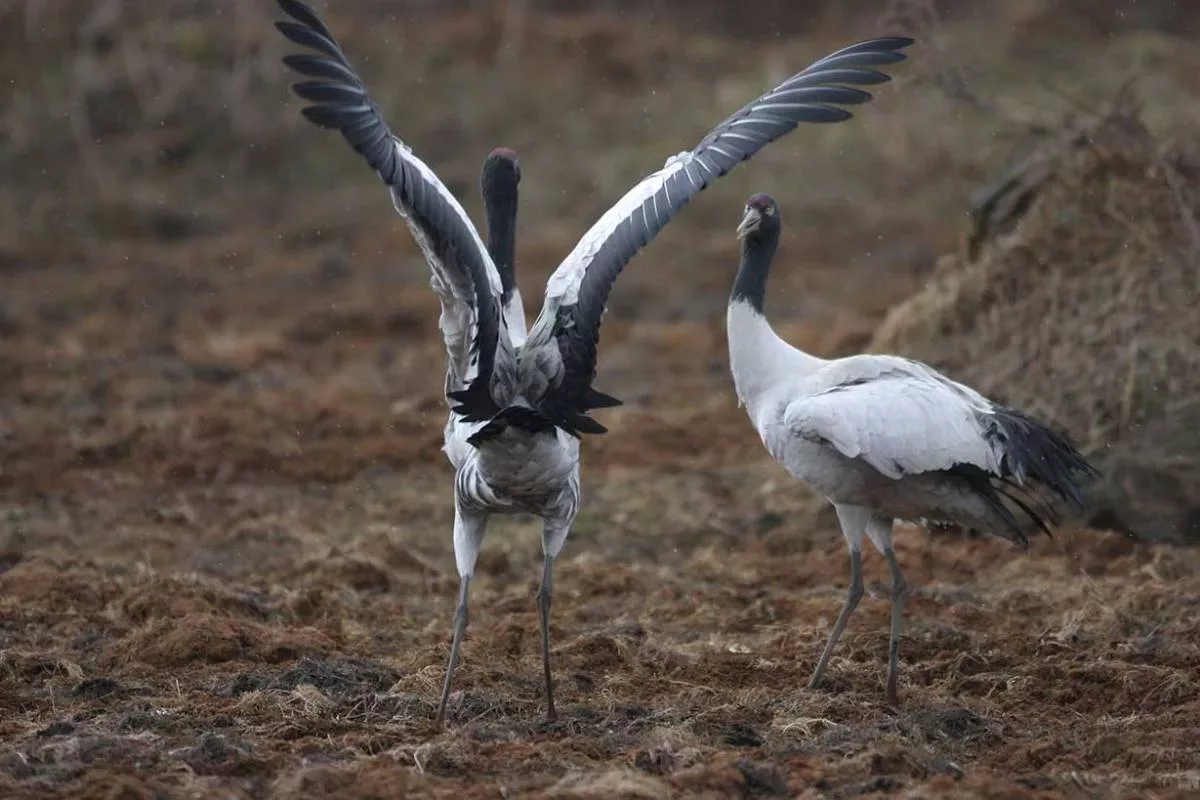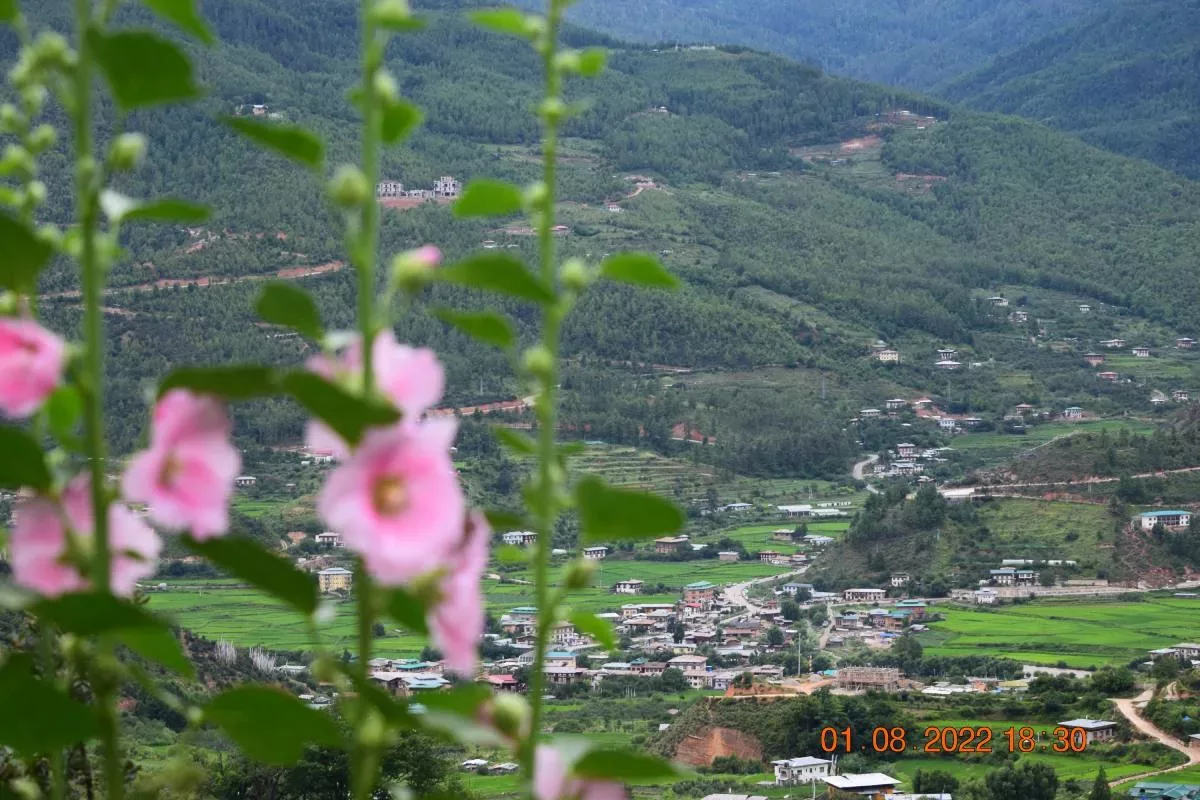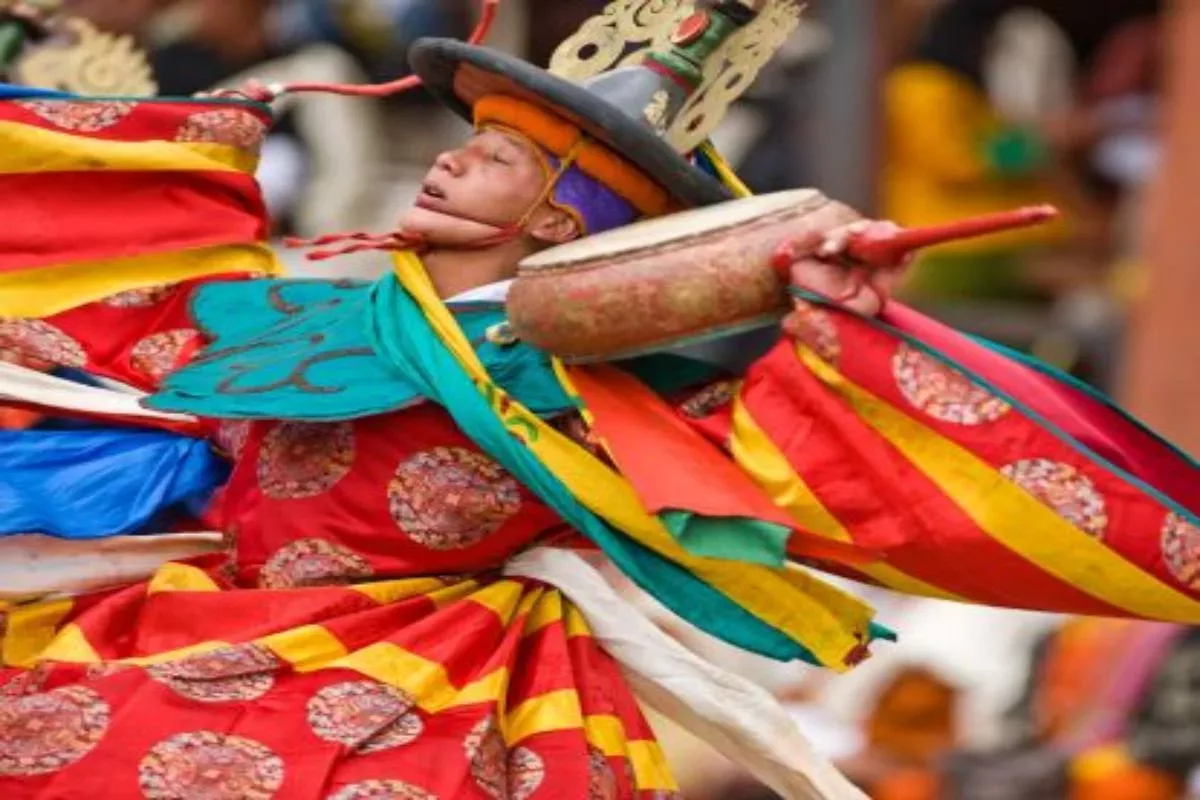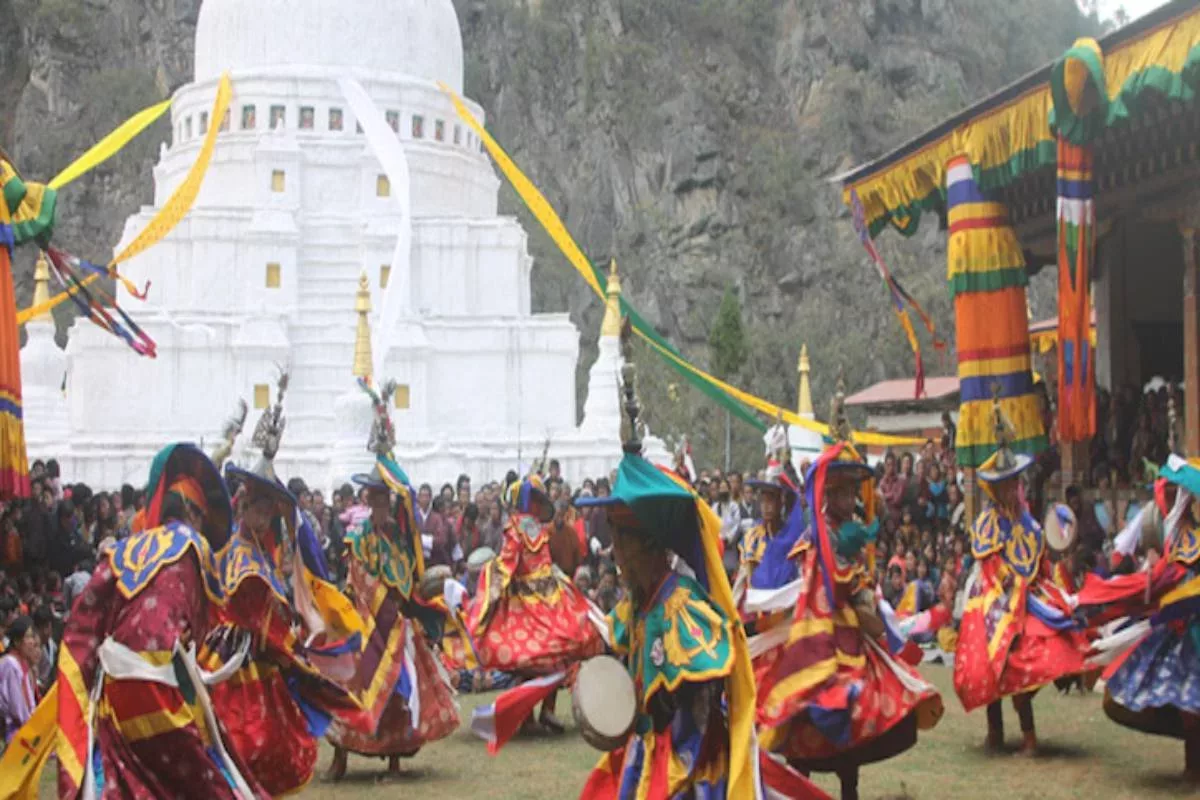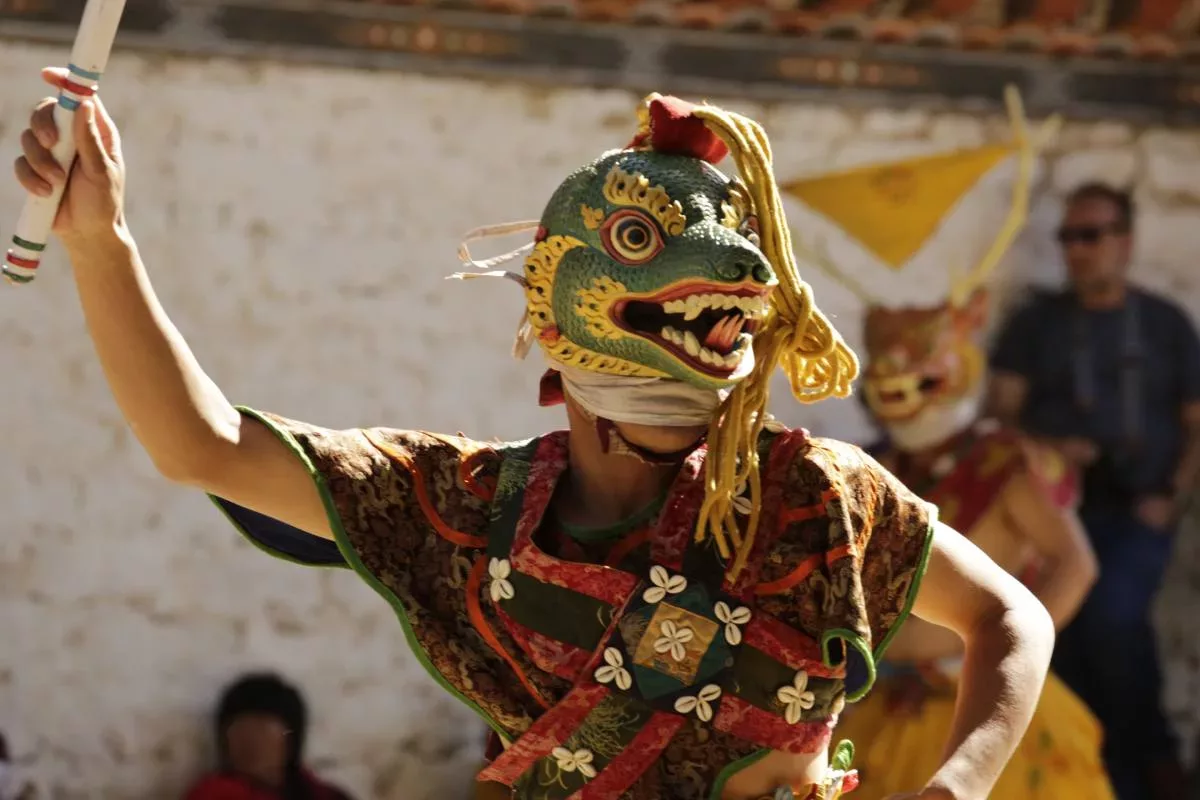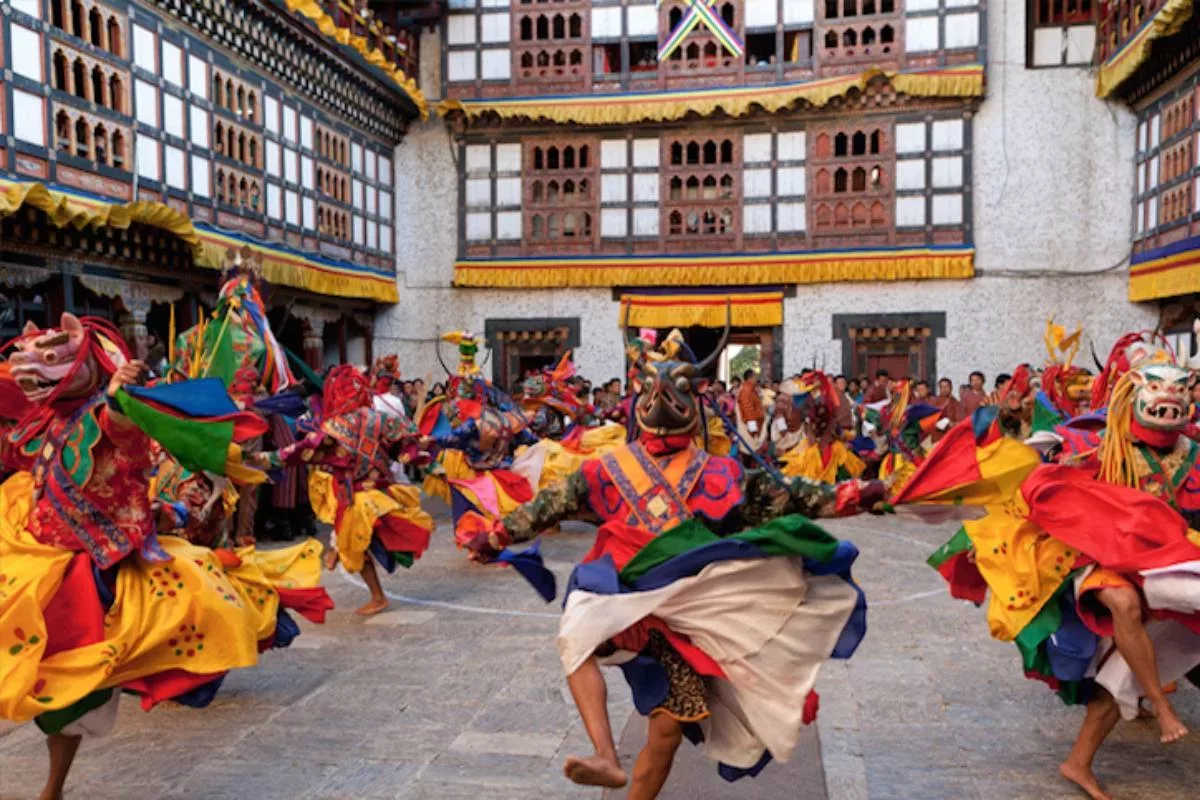Detailed Program
The flight to Paro is one of the most spectacular mountain flights in the world, with a constantly changing panorama of some of the highest mountains on earth. Our representative will meet you at Paro airport exit doors following customs formalities.
After lunch enjoys afternoon sightseeing around Paro, including a visit to the Ta Dzong Museum housing many religious relics, works of art, and handicrafts offering a great orientation into Bhutan’s historical, cultural, and religious past. Next, visit the Rinpung Dzong to see the painting of the great saint Milarepa, considered the master of meditation by the Bhutanese and believed to have attained enlightenment in a lifetime. Dzong’s are large monasteries and district administrative centers, which were once strategic forts. Afterward, drive to the capital, Thimphu (1.5 hours) following the Pachu River. Before dinner at the hotel, there will be an orientation on Bhutanese etiquette by your Host.
Overnight: hotel in Thimphu.
Places and attractions:
- Tashichho Dzong
- Semthoka Dzong
- Dochu La Pass
- Memorial Chorten
- Changangkha Lhakhang
- Zangdopelri
- The Tallest Buddha Image
- Tango And Cheri Monasteries
- The Handicrafts Emporium
- Traditional Medicine
- Zorig Chusum Institute
- National Library
- Weekend Market
- Botanical Garden
- Thadrak Goemba
- Tashigang Goemba
- Chizhing Samtencholing Lhakhang
Accommodation options:
Drive over the Dochu-La pass (3,100 meters), which on a clear day offers an incredible view of Himalayan peaks before descending into balmy Punakha valley (about 3 hrs total driving time). The drive through the countryside affords a glimpse of everyday life in this most remote of Himalayan kingdoms. In the Dochu-La area, there are vast Rhododendron forests that grow to tree size and bloom in late April/early May covering the mountains in a riot of glorious spring color.
Punakha was the ancient capital of Bhutan. On arrival, visit Punakha Dzong, the “Palace of Great Happiness” built in 1637 by the Zhabdrung, the ‘Unifier of Bhutan’ as predicted by the great Guru Rimpoche (Padmasambhava). It is situated at the confluence of the Mo Chu and Pho Chu (Mother and Father Rivers) and is the winter headquarters of the Je Khenpo and hundreds of monks who move en masse from Thimphu to this warmer location.
The three-story main temple of the Punakha Dzong is a breathtaking example of traditional architecture with four intricately embossed entrance pillars crafted from cypress and decorated in gold and silver. It was here on 17th December 1907, that Bhutan’s first king was crowned.
Overnight at a hotel in Punakha/ Wangduephodrang.
Places and attractions:
- Punakha Dzong
- Khamsum Yulley
- Talo Goenpa
- Nalanda Buddhist College
- Chorten Nyingpo Lhakhang
- Sangchen Dorji Lhuendrup
- Limukha Village
- Ritsha Village
Accommodation options:
In the morning drive to Yabesa village and hike to through rice fields and up to Khamsum Yulley Namgyal Chorten, built by her majesty the queen Ashi Tshering Yangdon Wangchuk. Perched high on a hill on the bank of the river, the Chorten houses paintings belonging to Nyingmapa Traditions.
Drive to Trongsa
The imposing Trongsa Dzong can be viewed across a deep canyon to signal your approach to the town around a curving road. After passing through cultivated fields and forested hillsides you will reach the Yutong La Pass (3400m). From here the road passes down through a dense, beautiful coniferous forest to a wide, cultivated valley known as Chumey valley before continuing in the soft afternoon light to the town of Jakar.
After refreshing yourself at your lodge, visit Kurjey Lhakhang, one of the most sacred places in the kingdom where Bhutan’s patron saint Guru Rimpoche meditated, and Jambay Lhakhang, erected by the Tibetan king Songtsen Gampo in the 7th century. It dates back to the origins of Buddhism in Bhutan and is one of the Kingdom’s oldest temples.
After light refreshments begin the drive to Bumthang, one of the most spectacular valleys in Bhutan and also the spiritual heartland of the kingdom.
Overnight at Bumthang.
Places and attractions:
Accommodation options:
Drive to the Ura valley to witness the colorful masked dances and cultural festivities of the Ura Festival. Join local villagers from the local area gathered in their finest clothes for an exciting tradition of music, dancing, color, and religious blessings. Ura valley in Bumthang is known for its famous dance known as the Ura Yakchoe. This festival that is held annually in May is a festival where a sacred and important relic is put on display for the people to receive blessings.
Myth has it that one day an old woman while sitting outside her house had a visitor, a lama who asked her for a glass of water. When she came out with a glass of water, the lama had vanished leaving behind a sack. Out of curiosity, she checked the bag and found a statue that is now being displayed annually. This relic has been passed on from generation to generation and now the descendants of the woman own it.
Overnight: lodge in Bumthang.
Places and attractions:
Accommodation options:
Enjoy an excursion to Tang Valley, the most remote valley in the Bumthang district. Activities may include a 45-minute walk uphill to Ugyen Chholing Palace, built in the 16th century by the Trongsa Penlop Tshoki Dorji. The main building in the complex now features a fascinating museum offering a real insight into the lifestyle of a Bhutanese noble family. Highlights include a book of divination and a dakinis dance costume made of bone.
You may also visit 14th century Tang Rimochen Lhakhang where Guru Rinpoche meditated and Mebar Tsho (Burning Lake), where some of Guru Rinpoche’s treasures were found in the 15th century by the famous treasure discover Pema Lingpa. It’s a good location to meditate.
Overnight: lodge in Bumthang.
Places and attractions:
Accommodation options:
In the morning visit Tamshing Lhakhang, founded in 1501 by Terton Pema Lingpa (founder of the Nyingmapa sect) and containing interesting and ancient Buddhist wall paintings. Pema Lingpa’s heavy coat of nails is kept in the Vestibule and people are permitted to try it on. It is said that if they can walk around the inner sanctuary three times while wearing it, some of their sins will be forgiven. Afterward, drive to Punakha with lunch en Enroute.
Overnight: hotel in Punakha.
Places and attractions:
- Punakha Dzong
- Khamsum Yulley
- Talo Goenpa
- Nalanda Buddhist College
- Chorten Nyingpo Lhakhang
- Sangchen Dorji Lhuendrup
- Limukha Village
- Ritsha Village
Accommodation options:
Take a picnic lunch on a picturesque riverside before exploring the Wangduephodrang Dzong. Built-in 1639 the strategically located Dzong is perched on a spur at the confluence of two rivers.
Drive back to Thimphu where you will have an opportunity to visit handicraft and souvenir stores. Afterward, proceed to Paro.
Places and attractions:
- Rinpung Dzong
- Drukgyel Dzong
- Taktshang
- Kyichu Lhakhang
- Kila Gompa
- Dungtse Lhakhang
- Tachog Lhakhang
- Dzongdrakha
Accommodation options:
After breakfast hike to Taktsang Monastery. The trail is broad and the walk of approximately 2 hours uphill takes you almost a kilometer above the Paro valley floor (for those who cannot hike we will arrange a horse for transfer up to the viewing point). The view of Taktsang Monastery built on a sheer cliff face 900 meters above the valley floor is a spectacular sight. The Monastery is also an important pilgrim site for the Buddhists.
The great Guru Rimpoche is said to have flown here on the back of a tigress when he brought the teachings of the Buddhist Dharma to Bhutan in the 8th Century. He then mediated in a cave there for three months where the monastery was later built. Nearby there is a teahouse where you can stop for refreshments.
In the afternoon drive to the ruins of the 17th Century Drukgyel Dzong, a historic monument built by the Zhabdrung to commemorate his victory against invading Tibetans in 1644. In fine weather, the towering peak of the sacred Mount Jomolhari (7314m) appears as a stunning backdrop. On the return drive to Paro, visit 7th Century Kyichu Lhakhang, one of the 108 temples constructed by the Tibetan king Songtsen Gampo.
Places and attractions:
- Rinpung Dzong
- Drukgyel Dzong
- Taktshang
- Kyichu Lhakhang
- Kila Gompa
- Dungtse Lhakhang
- Tachog Lhakhang
- Dzongdrakha
Accommodation options:
Breakfast in the hotel, and then drive to the airport for the flight to your onward destination.
- Inclusion
- Exclusion
- Insurance
- Airport pick-up and drop-off by private vehicle.
- 3-star accommodation (4 & 5 stars may require an additional premium update).
- Bhutan visa fee – including all necessary processing
- Route Permit
- Three meals per day during your stay in Bhutan
- A licensed Bhutanese tour guide
- All land transportation by private vehicle
- Camping equipment and haulage for trekking tours
- Sightseeing as per itinerary
- Monuments entrance fees where applicable
- Drinking water
- All internal taxes and charges
- A sustainable development fee of $200. (This sustainable development fee goes towards free education, free healthcare, and poverty alleviation, along with the building of infrastructure.)
- Airfare & Travel Insurance
- Expenses of personal nature, Tips to guides and drivers
- Expenses occurred due to unavoidable events i.e. road wrecks, flight delays etc.
Package does not include insurance of any kinds, and that you are required to obtain separate coverage from your home country before your trip begins.
